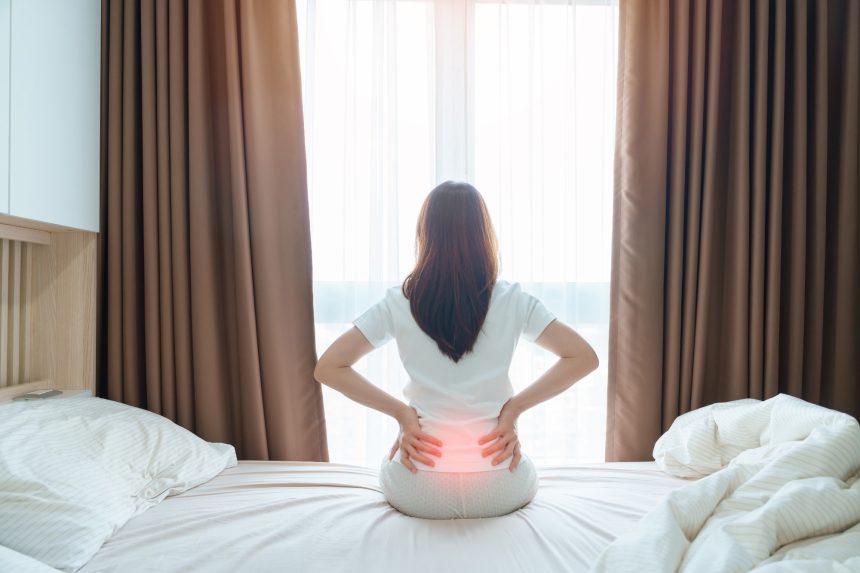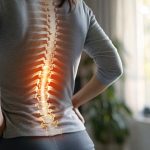A big European trial exhibits that VER-01, a full-spectrum hashish sativa extract, offers significant ache reduction and lasting enhancements in sleep and bodily operate in folks with persistent again ache.
Examine: Full-spectrum extracts from Hashish Sativa DKJ127 for persistent low again ache: a section 3 randomized placebo-controlled trial. Picture credit score: Jo Panuwat D/Shutterstock
In a latest research revealed within the journal Nature Medication, researchers investigated the security and efficacy of hashish Sativa extract (VER-01) within the therapy of persistent low again ache (CLBP).
Again ache is a significant reason for lack of work, poor high quality of life, and incapacity all over the world. If ache stays for greater than three months, it’s outlined as CLBP. CLBP is usually related to impaired bodily operate and sleep high quality. Pharmacological remedies embrace non-steroidal anti-inflammatory medicine, which aren’t appropriate for long run because of negative effects (AEs). Opioids are sometimes utilized in long run remedy regardless of security considerations and AEs.
Nevertheless, some tips advise towards opioid use, and there’s a consensus amongst regulators, well being professionals and affected person organizations concerning the pressing want for non-membered analgesics with security profiles. Hashish-based medicine have attracted nice curiosity in managing persistent ache. However, the standard of proof for the scientific use of those merchandise is low.
Concerning the analysis
On this research, researchers investigated the security and efficacy of VER-01 in CLBP. This randomized, placebo-controlled trial was performed in Austria and Germany, adopted by a 12-week therapy section (section A), a 6-month extension section (section B), adopted by a 6-month continuation section (section C) or withdrawal section (section D). Adults over the age of 18 had been enrolled with a prognosis of CLBP with or with out neuropathic ache elements.
VER-01 was a standardized full-spectrum extract of the patented C. sativa L. pressure DKJ127. Every VER-01 dose supplied 2.5 mg tetrahydrocannabinol, 0.02 mg cannabidiol, and 0.1 mg cannabigerol. Moreover, VER-01 contained mixtures of carotene, terpenes, phytosterols, and flavonoids, amongst others. The placebo consisted of sesame oil, colorants and hashish scent. Members had been requested to take analysis remedy with or with out meals.
If consumption of ache medicines apart from rescue remedy (ibuprofen) or paracetamol was contraindicated, protocol restrictions per protocol had been prohibited in phases A and D, and the ache depth, sleep high quality, dosage, and use of Respet remedy was recorded for the final three weeks of section B. The primary endpoint for Section A was the change in ache depth over the imply week from baseline to week 15, measured on an 11-point numerical score scale. Though a number of secondary outcomes had been collected, the first endpoints for phases B and C haven’t been outlined.
The first endpoint for Section D was the 7-day imply of ache depth and the time to therapy dysfunction outlined as a rise of ≥20% improve in comparison with Section D baseline. Varied secondary endpoints had been additionally evaluated in phases A and D. Security was assessed based mostly on the incidence of AEs, together with the connection between security and analysis medicine. Moreover, sufferers’ satisfaction with endurance power was examined.
Survey outcomes
In whole, 820 sufferers had been randomized to VER-01 or placebo. Of those, 525, 155, and 116 continued to b, c, and d, respectively. On common, individuals had been 52 years outdated and had a physique mass index (BMI) of 29 kg/m². Roughly 22% had neuropathic ache elements, and 23.5% had extreme ache at baseline. Hypertension and weight problems had been the commonest concurrent ailments. Ache depth was reasonable to extreme at baseline for each teams.
This research met the first endpoint for that section A. Imply ache depth decreased by 1.9 factors from baseline within the VER-01 group in comparison with the placebo group. VER -01 exhibits better ache reduction than placebo, with a median distinction of -0.6 factors. Members with neuropathic ache elements confirmed better variations between teams. Section A secondary endpoints had been additionally met, with vital enhancements in neuropathic signs.
The proportion of individuals with ≥30%, ≥50%, and ≥2 factors of ache discount was considerably larger within the VER-01 arm than within the placebo group. The VER-01 group additionally confirmed vital enhancements in bodily operate and sleep high quality. Moreover, these enhancements had been related to a constructive international impression of change and the next high quality of life. The quantity required to deal with a 30% ache response was 6.8. Ache depth was additional diminished throughout section B, with a 3-point discount in comparison with the baseline in section A.
Section B topics who participated in Section C maintained ache reduction and confirmed no indicators of efficacy or dose escalation over time. In section D, time to therapy failure was not considerably totally different between teams (hazard ratio, 0.75; p = 0.288; median, 22 vs. 11 days for VER-01 and placebo). Nevertheless, placebo topics skilled a major improve in ache from section D baseline after withdrawal. AEs permeated with section A therapy had been reported by 83% of VER-01 individuals in comparison with 67% of placebo topics, with AE-related discontinuation occurring in 17.3% for VER-01 and three.5% for placebo. Most opposed occasions had been gentle to reasonable and momentary, with decrease incidence after the preliminary titration interval.
The proportion of extreme AEs was comparable throughout teams. No deaths occurred throughout the investigation. There was no proof of abuse, dependancy or withdrawal, together with after the sudden cancellation. Moreover, there have been no clinically vital treatment-related adjustments in very important indicators, electrocardiogram, or scientific laboratory parameters of VER-01 in comparison with placebo. Tolerability satisfaction was 68% in VER-01 on the finish of Section A and elevated to 83% and 84% by the top of Section B and C, respectively.
Conclusion
VER-01 supplied significant ache reduction and improved sleep high quality and bodily operate. The VER-01 group additionally had considerably decrease use of rescue medicine. Lengthy-term VER-01 therapy was related to steady enchancment in ache discount, bodily functioning, high quality of life, and sleep high quality.
General, this discovering offers robust proof to help the security and efficacy of VER-01 in CLBP therapy. Key limitations embrace the dearth of formal blinding evaluation, no cognitive testing, and the first endpoints that aren’t vital in randomized withdrawal, even when there’s a massive improve in placebo after withdrawal.
Journal Reference:
Karst M, Meissner W, Sator S, Keßler J, Schoder V, Häuser W (2025). Full-spectrum extracts from Hashish Sativa DKJ127 for persistent low again ache: a section 3 randomized placebo-controlled trial. Pure medication. doi:10.1038/s41591-025-03977-0, https://www.nature.com/articles/S41591-025-03977-0









